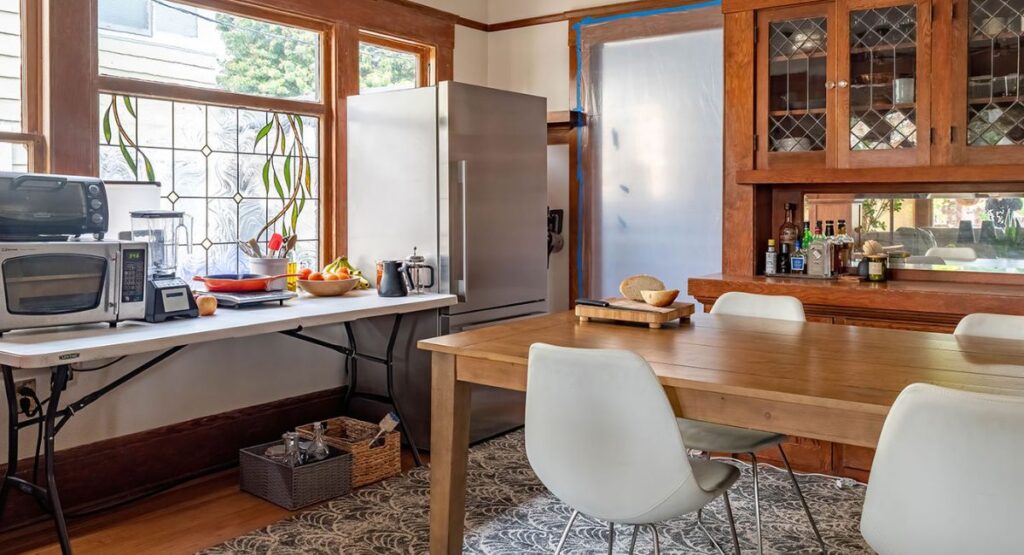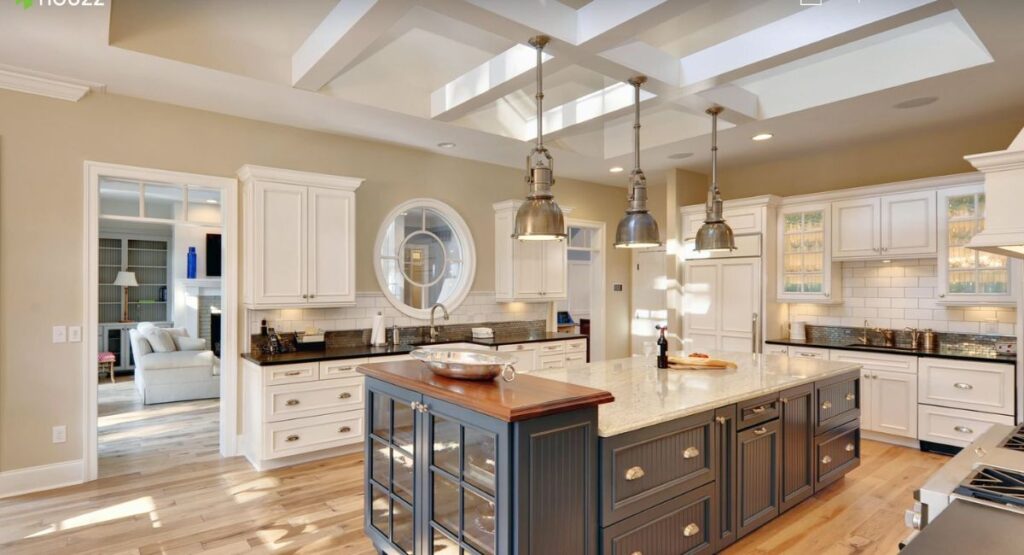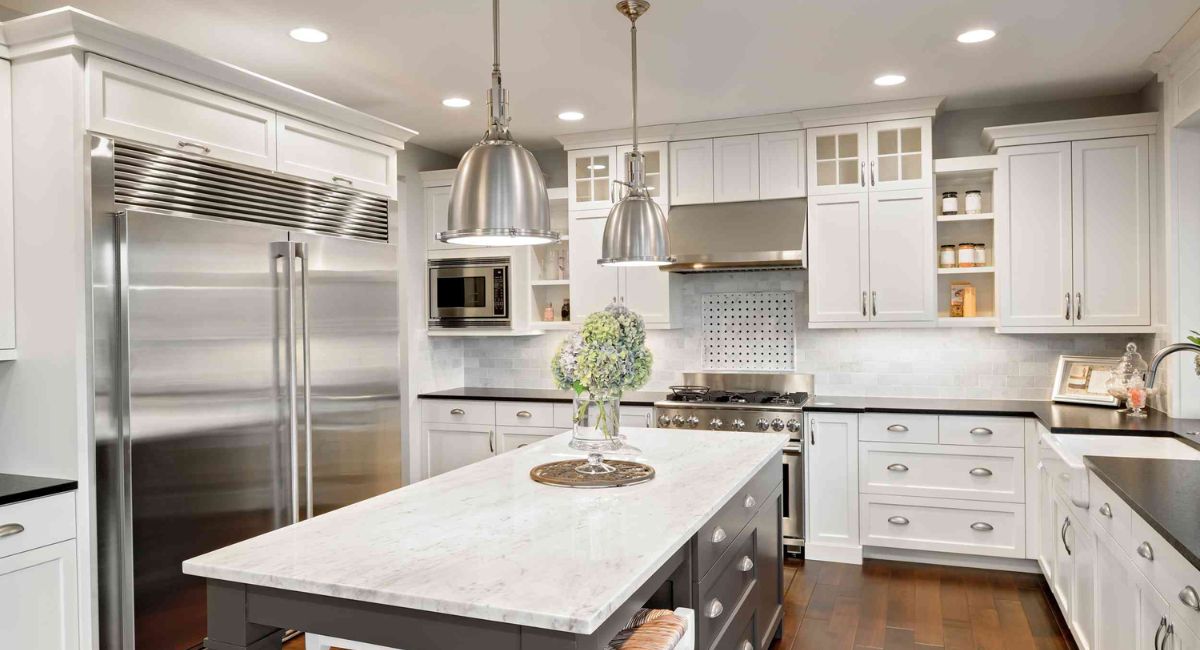A kitchen remodel means changing the design, style, or layout of your kitchen. It can include new cabinets, countertops, or flooring. The goal is to make the kitchen more useful and beautiful.
Many people feel stressed when they think about remodeling. It may seem big, costly, and confusing. But with the right plan, it can be simple and exciting.
Planning well is the key to staying calm during a remodel. Break the work into small steps and set a budget. This way, you can enjoy the process without stress.
1. Set a Realistic Budget and Timeline
Every kitchen upgrade starts with money and time. If you don’t set a realistic budget and timeline, stress will take over quickly. Think about how much you can afford before you even look at kitchen design trends or fancy appliances. Experts recommend setting aside at least 10–15% of your home renovation budget for surprises. Managing unexpected expenses like hidden plumbing issues or material shortages is easier when you have that buffer ready.
Here’s a remodeling cost breakdown for U.S. kitchens:
| Remodel Type | Average Cost (USA) | Project Timeline for Remodel |
|---|---|---|
| Small Kitchen Makeover | $10,000–$20,000 | 4–6 weeks |
| Mid-Range Remodel | $25,000–$50,000 | 6–12 weeks |
| High-End Renovation | $75,000–$120,000 | 12–20 weeks |
By knowing the numbers in advance, you can control spending, plan payments, and avoid panicking when bills arrive.
2. Define Your Must-Haves and Nice-to-Haves
It’s tempting to want every stylish feature from glossy magazines, but you need to separate must-haves vs. nice-to-haves. A functional kitchen layout, safe flooring and lighting upgrades, and reliable appliances are essentials. On the other hand, luxury custom cabinets, a massive island, or imported tiles may fall under the “wants” list.
Think of it this way: if you cook daily for a large family, you might prioritize storage and space with pantry shelves and wide counters. If you’re more about hosting, then kitchen island ideas with seating could be a smart choice. By knowing what matters most, you’ll reduce delays, cut costs, and avoid costly mistakes when decisions pile up during the remodel.
3. Choose the Right Professionals for the Job
Hiring contractors is one of the most stressful parts of a home improvement project, but it doesn’t have to be. Always check contractor licensing and insurance, ask for contractor quotes from at least three companies, and compare their work. Look for Better Business Bureau reviews and past customer feedback. Selecting kitchen professionals who understand your vision will save you headaches later.
Good professionals also help with permits and paperwork, making sure your project meets local codes. Remember, the cheapest contractor isn’t always the best. A reliable team might cost more upfront, but they’ll keep the project timeline for the remodel realistic and prevent unnecessary stress.
4. Speak to Your Designer & Project Manager
Before a hammer hits a nail, sit down with your designer and project manager. Clear communication with contractors and design teams ensures your goals match what they deliver. Bring a project binder or digital folder with your inspirations, kitchen remodeling ideas, and chosen materials.
Daily check-ins or weekly meetings can help track daily progress notes and handle delays and disruptions. For example, if the delivery of your custom cabinets is late, your designer can adjust the schedule to keep work moving. Open dialogue builds trust, avoids misunderstandings, and keeps you calm during the chaos.
Also Read: How To Protect Your Roof From Heavy Rain And Storm Damage
5. Set Up a Temporary Kitchen

Losing access to your cooking space during a kitchen remodel can feel overwhelming, which is why setting up a temporary kitchen is so important for reducing homeowner stress. You can create a simple cooking area in your garage, basement, or spare room with essentials like a microwave, portable stove, coffee maker, and a compact fridge. Think of it as indoor camping—practical, not fancy, but highly effective. A temporary kitchen setup allows you to maintain daily routines, avoid relying solely on takeout, and keep your family’s stress levels low, making the entire kitchen remodel experience much smoother.
6. Relocate Your Pets Away from the Kitchen
Pets may not understand a kitchen remodel, but they can definitely feel the stress it brings. Loud noises, unusual smells, and heavy foot traffic often trigger anxiety in pets, making them restless or unsafe.
The best solution is to move your pets to a quiet, comfortable space away from the construction area, giving them a sense of security while workers carry out the remodel. For instance, one homeowner in Dallas explained how her dog repeatedly wandered into the renovation zone until she created a cozy room filled with toys and blankets.
This small adjustment kept her pet safe, reduced stress, and allowed contractors to move freely. A kitchen remodel impacts the entire household—not just people—so planning for pets is essential to avoid costly mistakes and maintain harmony during the renovation.
7. Consider Moving Out or Taking a Family Vacation
Sometimes the best way to enjoy a stress-free remodeling process is to simply step away. If your remodel is large or involves major kitchen functionality improvement like moving walls, you might want to consider moving out for a few weeks. Short-term rentals, staying with family, or even planning a family vacation can give you peace of mind while professionals handle the chaos.
Think of it as a win-win: you get relaxation, and when you return, you’ll see huge progress. Even if you can’t leave for the entire time, scheduling a short break during the messiest phase can save your sanity.
8. Opt for Energy-Efficient Appliances and Easy-Care Surfaces

A remodel is the perfect time for choosing appliances that make life easier and save money. Look for energy-efficient appliances with the ENERGY STAR® label. From refrigerators that use less power to induction cooktops that heat faster, these upgrades lower bills and reduce environmental impact.
Also, think about easy-care surfaces. Materials like quartz countertops, laminate finishes, and stainless steel backsplashes are durable and low maintenance. They’re not only part of modern kitchen design but also a wise move for long-term kitchen functionality improvement. Pair these choices with smart kitchen design trends like open shelves or under-cabinet lighting for a stylish yet practical upgrade.
9. Kitchen Remodeling Costs: Real Examples for U.S. Homes
Understanding real costs keeps expectations grounded. According to HomeAdvisor, the average U.S. kitchen renovation runs between $25,000 and $50,000, depending on size and materials. A budget-friendly remodel for a small apartment kitchen can stay under $15,000, while a full kitchen upgrade in a suburban home with custom cabinets and high-end finishes can hit $100,000 or more.
Case Study: In Chicago, a family spent $35,000 on a mid-range kitchen makeover. Their remodel included flooring and lighting upgrades, new custom cabinets, and a stylish kitchen island idea with seating. Because they had a clear remodel planning strategy and tracked expenses in a project binder, they stayed on budget and avoided delays.
Conclusion
A kitchen remodel doesn’t have to be overwhelming when you approach it with smart planning. By setting a clear home renovation budget, outlining your priorities, working with reliable professionals, and arranging a temporary kitchen setup, you can manage the disruption without losing peace of mind. Add in energy-efficient upgrades, flexible scheduling, and open communication, and the process transforms from stressful to rewarding.
Kitchen remodeling ideas go beyond creating a stylish modern kitchen design—they enhance everyday comfort, family gatherings, and lasting memories. With the right kitchen makeover tips, you won’t just get through the renovation; you’ll enjoy the journey and appreciate the beautiful, functional space that perfectly matches your lifestyle.

“As founder of Namezroot, Muhammed Serum blends passion and creativity to bring readers content on names, lifestyle, travel, and more.”

